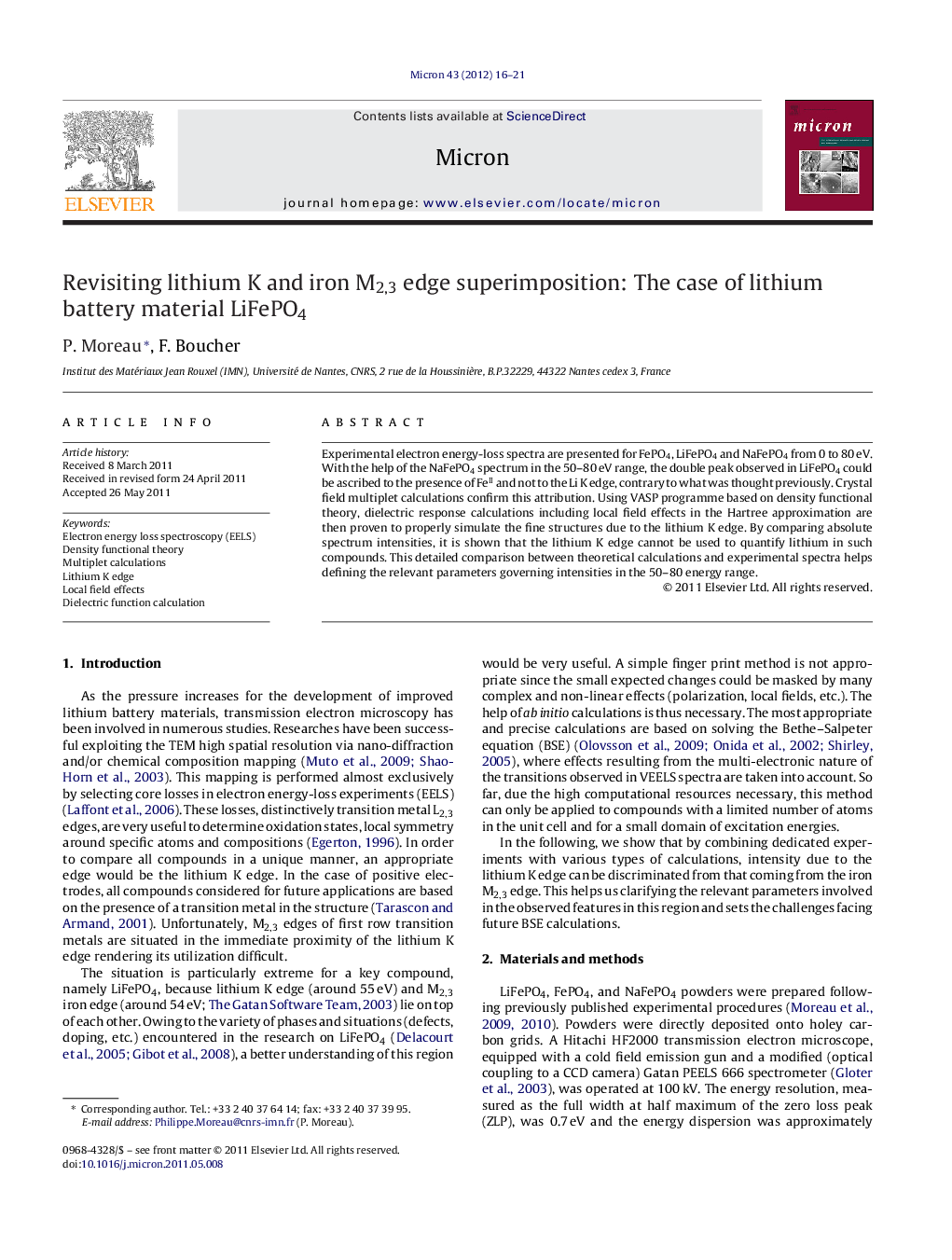| Article ID | Journal | Published Year | Pages | File Type |
|---|---|---|---|---|
| 1589448 | Micron | 2012 | 6 Pages |
Experimental electron energy-loss spectra are presented for FePO4, LiFePO4 and NaFePO4 from 0 to 80 eV. With the help of the NaFePO4 spectrum in the 50–80 eV range, the double peak observed in LiFePO4 could be ascribed to the presence of FeII and not to the Li K edge, contrary to what was thought previously. Crystal field multiplet calculations confirm this attribution. Using VASP programme based on density functional theory, dielectric response calculations including local field effects in the Hartree approximation are then proven to properly simulate the fine structures due to the lithium K edge. By comparing absolute spectrum intensities, it is shown that the lithium K edge cannot be used to quantify lithium in such compounds. This detailed comparison between theoretical calculations and experimental spectra helps defining the relevant parameters governing intensities in the 50–80 energy range.
► Comparison of EELS experimental and theoretical spectra in the complete 0–80 eV range. ► The double peak observed in LiFePO4 around 60 eV is explained. ► DFT and multiplet calculations are very complementary for this system. ► NaFePO4 spectra compared to those for LiFePO4.
